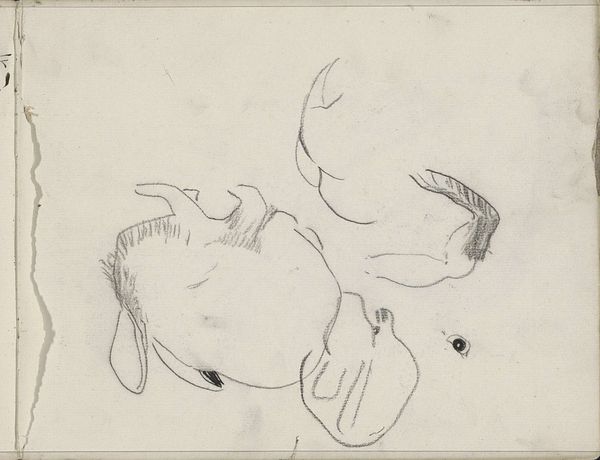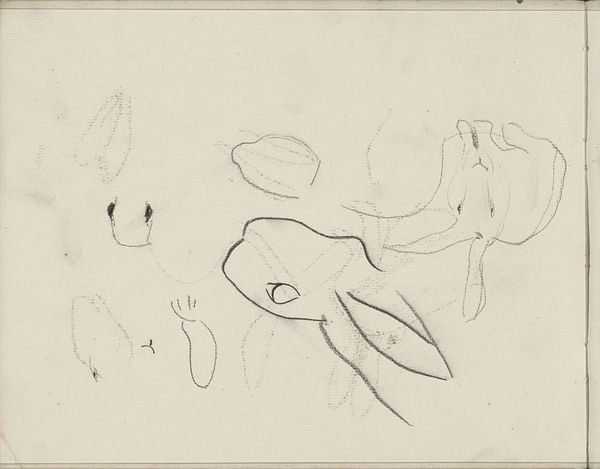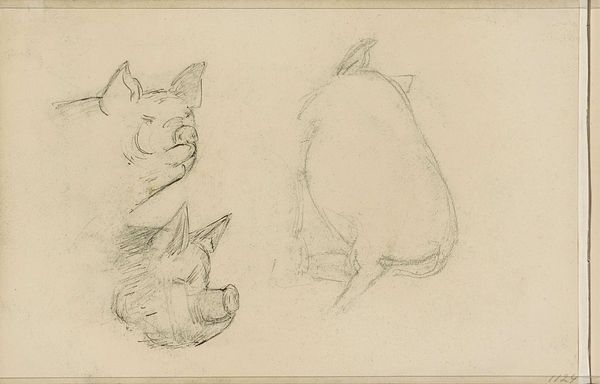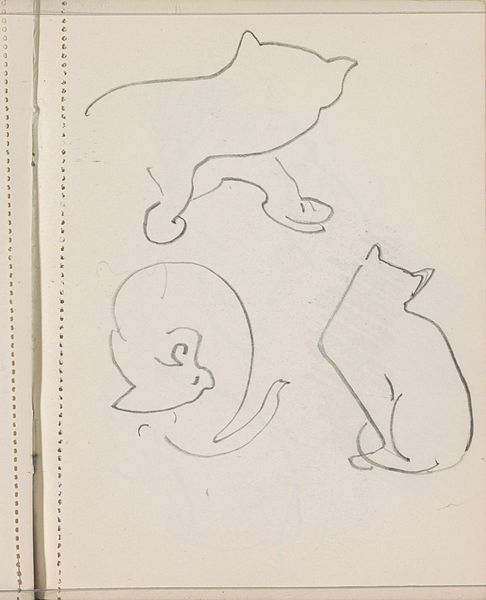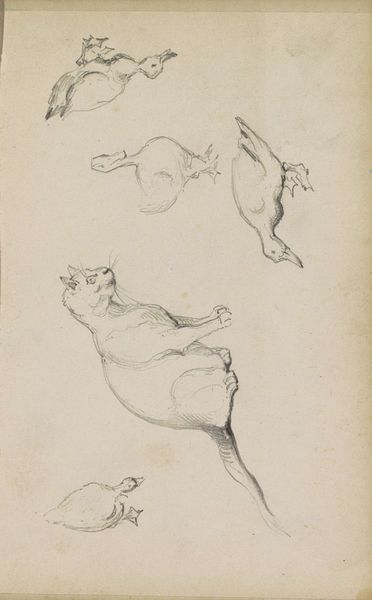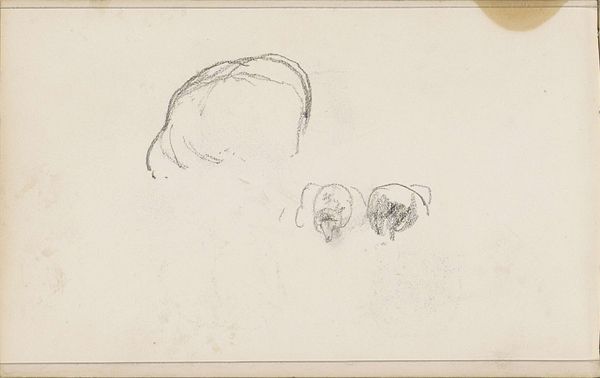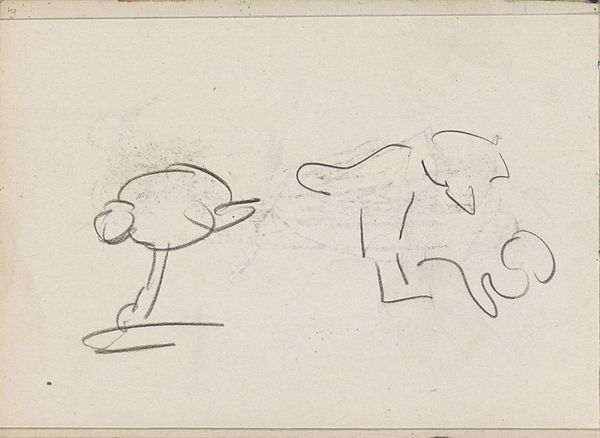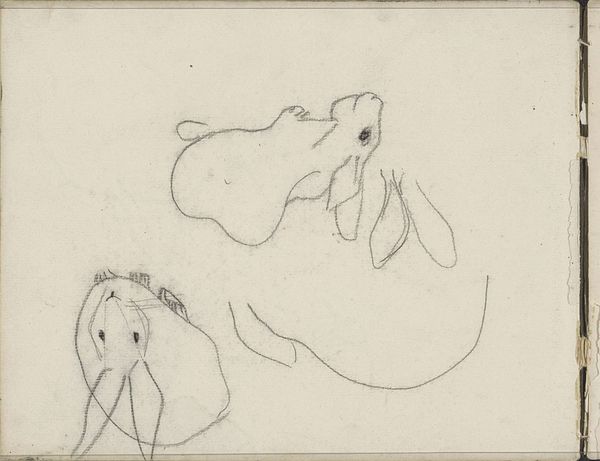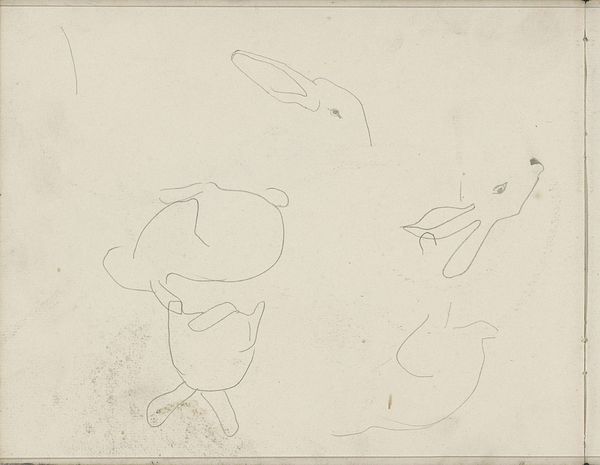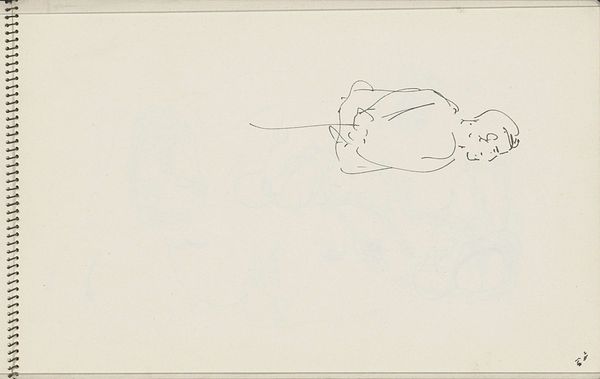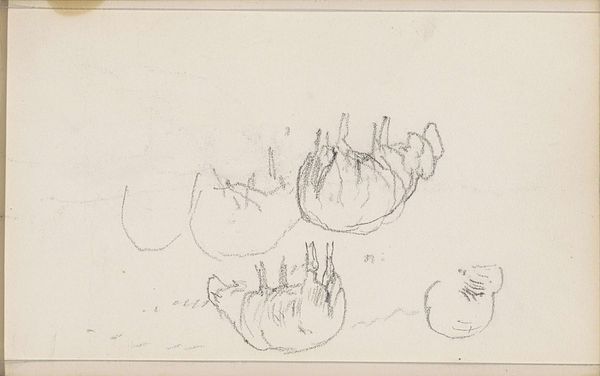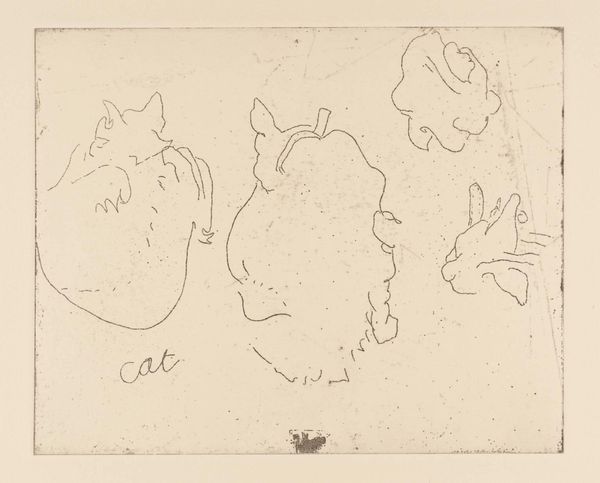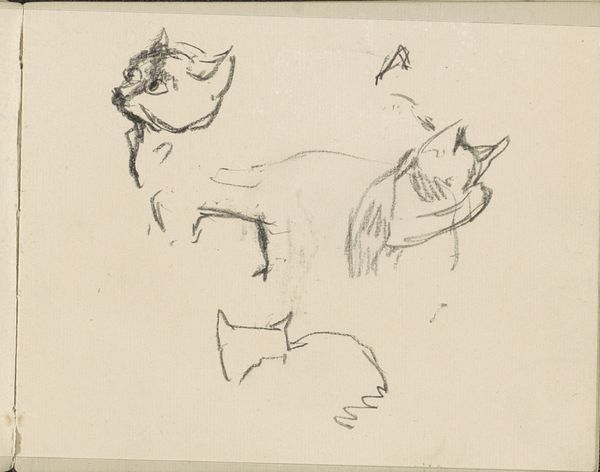
drawing, paper, pencil
#
portrait
#
drawing
#
animal
#
pencil sketch
#
dog
#
figuration
#
paper
#
pencil
#
line
Copyright: Rijks Museum: Open Domain
Curator: What a deceivingly simple drawing. Julie de Graag created "Liggende en zittende kat en een hondenkop," or "Reclining and sitting cat and a dog's head" around 1892. Editor: There’s an almost melancholic stillness to this, isn’t there? The tentative pencil lines seem to capture fleeting moments, quickly observed. It feels very immediate, a study, perhaps. Curator: I agree, the intimacy is striking. Drawings like this, of pets, remind us how crucial domesticity became to artistic circles near the century’s end. They become extensions of a shifting cultural landscape. Editor: Yes, and the way she’s used the pencil too, the different pressures creating darker lines defining contours… that shows her focus on the physical presence, the "thingness" of these animals. The tooth of the paper also lends a visual texture. Curator: De Graag circulated amongst circles of women artists, and that too likely afforded her opportunities to sketch these quotidian subjects—drawing what one knows and what is closest at hand. There's less artistic policing, less pressure towards grandeur. Editor: It makes me think about access to materials too. Paper and pencil were more accessible tools than, say, oils, allowing for immediate expression. This speaks volumes about artmaking and who could participate. The availability influenced the art produced, for sure. Curator: Absolutely. The art market was already in full swing, influencing choices made by artists and the visibility of women's artwork. A drawing such as this provided artists a way to sidestep some pressures related to medium, subject, and size. Editor: It reminds us that what we consider 'minor' works sometimes tell a bigger story about labor and resources within the art world. It prompts a broader sense of value and artistic consideration. Curator: Definitely, seeing the artist’s hand at work provides such an interesting glimpse into 19th-century artistic life, wouldn’t you say? Editor: I agree; these glimpses behind-the-scenes allow us to appreciate a far more expansive material story.
Comments
No comments
Be the first to comment and join the conversation on the ultimate creative platform.
